I called my friend Mrs. Hope (the goat lady) yesterday to ask her advice about worming our goats. Somewhere in our conversation, she asked if the goats “knew” us yet. I told her that they start calling every time they hear the back door open, or hear our voices. She said, “Oh yeah, they know you.” And she suggested that I start training them to be led, while they’re still little.
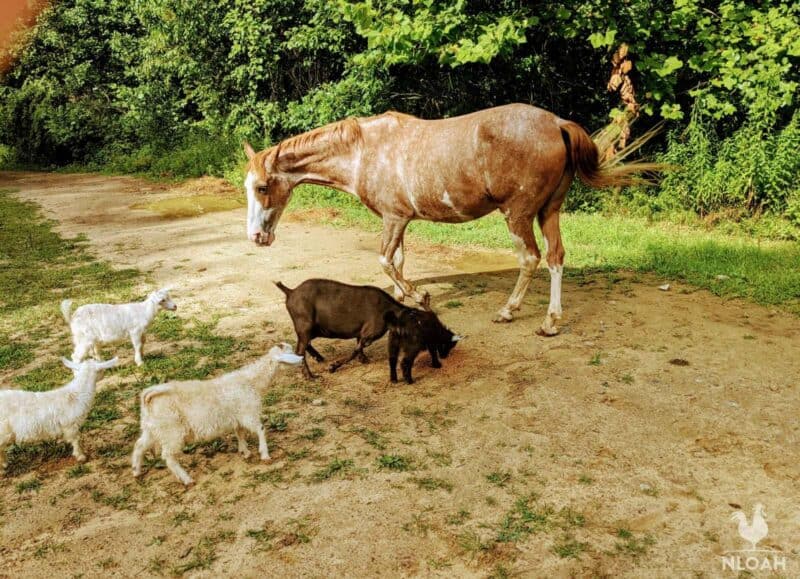
I told her I’d been thinking about how I needed to do that. She said, “Yeah! Let them babies out of their pen!” I was really surprised by that! “Really? Won’t they run away?” I asked. “Naw, you’re their mama now. If you’re the one who feeds them, they won’t go far,” she reassured.
I’d love to let them out, I thought. They have already cleared out the greenery in their enclosure, and there is a ton of brush and plants all around that they would love to munch on. So, I decided that I would let them out today if it was nice outside.
I had to do my grocery shopping this morning, so while I was at Walmart doing my “couponing” I picked up some dog collars for the goats, just in case I had to drag them back into their pen.
It was beautiful outside, so after we unloaded the groceries, and ate lunch I asked the kids, “Wanna let the goats loose?” Jada in particular was very excited about the idea.
We went out to their pen and I put a little grain in their bowl to distract them while we put their collars on. (I picked out some cute pink camo collars for my girls.) As they finished their snack I said, “Okay babies, I’m gonna let you loose. Please don’t take off, okay?”
I braced myself, fully expecting them to run out the door and away through the woods, laughing “See ya later sucker!” as they went.
I opened the gate and stepped aside.
Silly goats. They just stood where they were. They didn’t bum-rush the door for freedom! They weren’t sure what to do at first. I actually had to coax them out with some feed in a cup. Once they were out, they really just stuck around the fence, eating the brush beside their enclosure for a while.
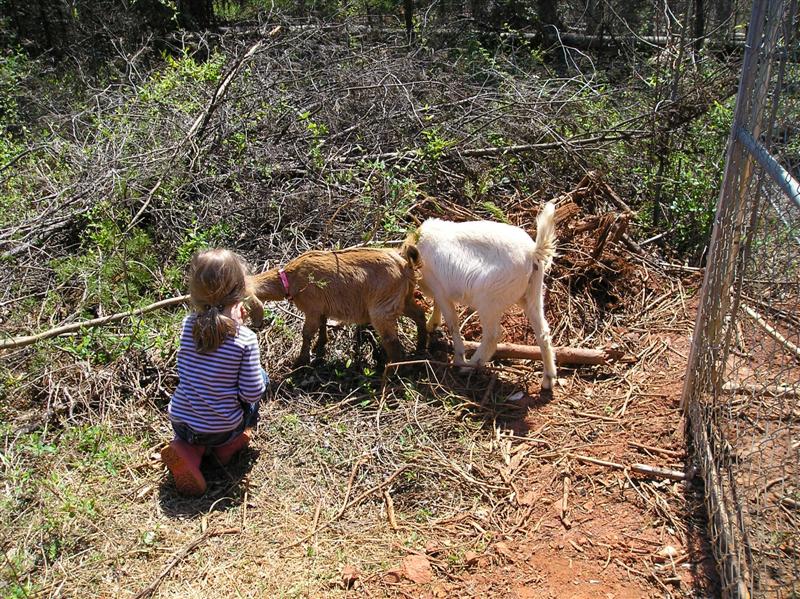
My kids really enjoyed having the goats loose and followed them around to pet them while they grazed. Eventually, they got a little braver and began to explore their new surroundings. They never did go far though.
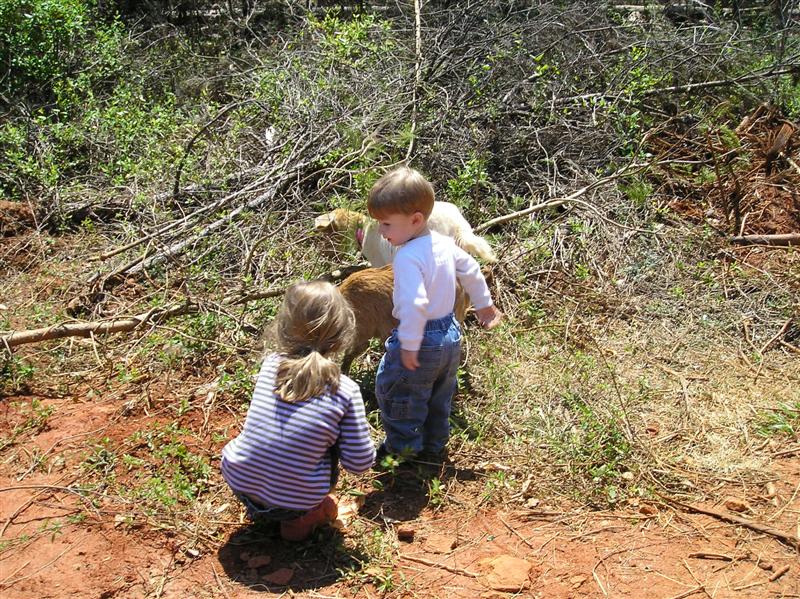
I covered my potted strawberries outside so they wouldn’t eat them, but they did manage to find their way over to my raspberry bush. Boogers! I had to shoo them away from it several times.
Otherwise, allowing goats to free range is pretty simple. Here are some tips if you have never tried it before!
Why You Should Let Goats Free Range – the Benefits and Challenges
There’s not really one term that is widely accepted when it comes to “setting goats loose,” as I did. Some people refer to it as “free-range grazing” while others prefer the idea of “free-ranging their goats.”
Whatever you call it, though, it’s more or less the same idea.
You let the goats out of their pens on a regular basis so they can nibble on bushes, grass, forage…whatever they’d like (hopefully, not your petunias, though…)
When you free-range your goats, you don’t bother to stake, tether, fence, or confine them in any way. You just let them do their thing.
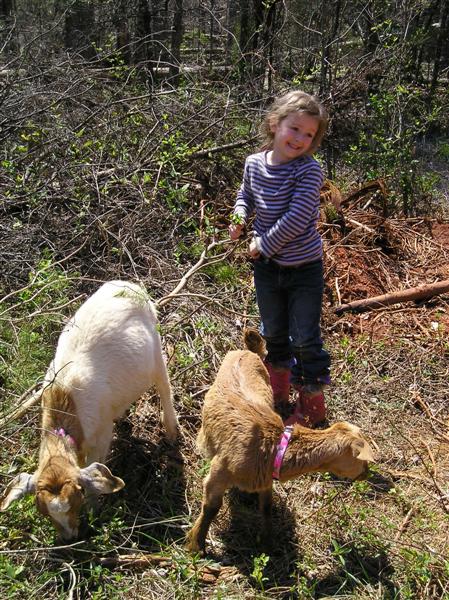
There are plenty of benefits associated with free-ranging goats. They’ll be able to get to more grass, bus, and other foods, helping to improve their diets and to allow them to access nutrients that they wouldn’t be able to if they were just being fed grain.
There are other benefits to free-ranging your goats, too. Goats primarily eat things like pasture, hay, and grass. If you don’t free range your goats, you may find that you end up spending a ton of money just to keep them fed. If you’re trying to save money, letting goats work every available square inch of your property is a good idea.
Plus, goats can get rid of some of the brush and weeds on your property. If you have brush hanging around that you don’t want to deal with, let the goats out! They’ll take care of the dirty work for you. Goats are known for their ability to eat just about everything, including weeds, grass, and even poison ivy!
While free-ranging sounds simple at its core – and for some animals, it is – with goats, you need to do a bit of extra planning. Goats, unlike chickens who will make their way back to a coop at night, are natural-born wanderers. They won’t necessarily stay close to home and they can find themselves hurt, killed, or lost more easily than chickens can.
Goats can also be quite destructive! Therefore, you will need to take a few steps – and follow the tips I will give you – to make sure your goat free ranging adventure goes off without a hitch.
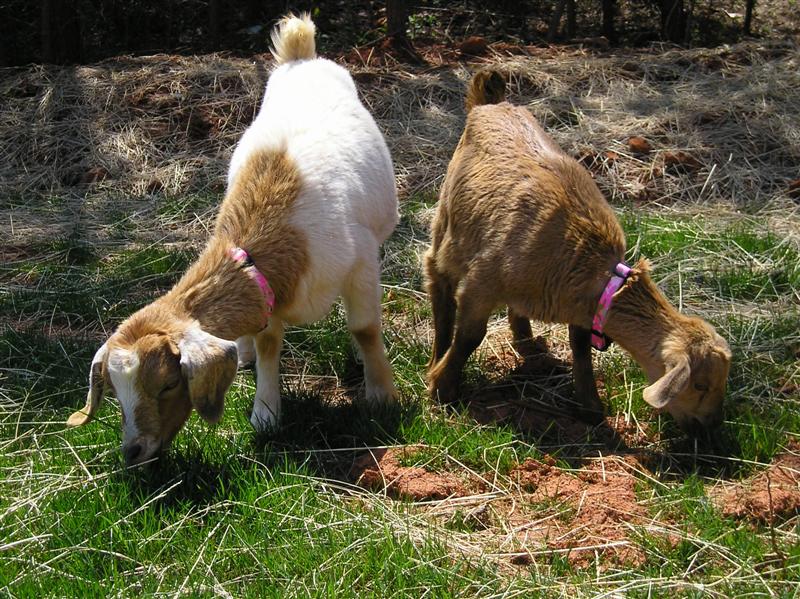
Tips for Free Ranging Goats
If you are going to try free ranging your goats, there are a few tips you will want to follow.
Don’t Let Them Be Completely Free
If your entire property isn’t surrounded by fence, you may want to be careful about letting your goats free range. They could easily wander off and get into mischief on the neighbor’s property or worse, wander into the road and get hit by a car.
Determine the ideal boundaries for free ranging your goats ahead of time, and come up with a system so that you don’t burn yourself later on!
Watch Out For Poisonous Plants
Goats can – and will – eat just about anything, but that doesn’t mean that they should. There are some plants that you will want to check your property for before you allow your goats to free range.
Some of the most common poisonous plants that might be growing on your property include common milkweed, buttercup, and bracken fern. Foxglove, St. John’s wort, and lantana are all poisonous to goats, too.
Here are some of the other plants you need to watch out for:
| Poke weed | Water hemlock |
| Poison hemlock | Spurge |
| Chokecherry trees | Cherry trees |
| Plum trees | Elderberry trees |
| Yew trees | Ponderosa pine |
| Azaleas | Kale |
| Lily of the valley | Poppy |
| Oleander | Potato |
| Rhubarb | Rhododendron |
Move Anything the Goats Could Damage
Free ranging your goats is all fun and games until they jump on your car and dent the hood. Or until they chew up your expensive potted geraniums that you worked so hard to cultivate. Or until they get into the trash and strew it all over the lawn!
Is that painting a vivid enough picture for you?
Goats are awesome, but they’re curious – and they can be destructive! Make sure the area in which you allow your goats to free range isn’t filled with items they can destroy. Whenever possible, get those items out of the way to reduce the likelihood of damage.
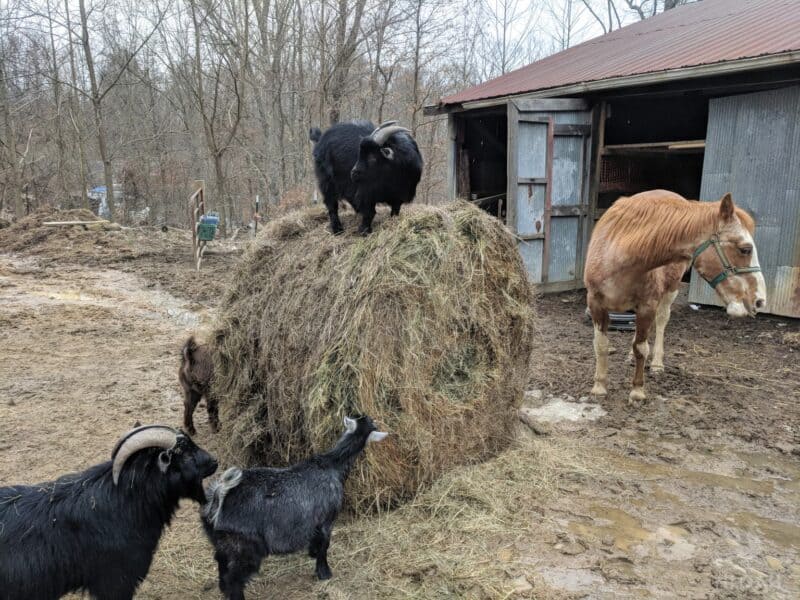
Don’t Worry About Other Free Ranging Animals
In most cases, you can allow goats to free range even if you have other critters nearby. Goats are social and won’t bother poultry like ducks, chickens, or guineas in the slightest. While you probably don’t plan on free ranging your sheep or cows, goats are also known to get along with these species, too.
Let Dogs Help You Out
Now, this tip is not for the faint of heart. You shouldn’t get dogs involved in your free-ranging of the goats unless you have reliable herding dogs that you can count on to help keep your goats close. These dogs should be highly trained and know what they need to do to keep the goats nearby.
Don’t try this if you’ve never let dogs work with your goats before! It could cause serious injury to the goats (or even kill them).
Change Your Plans During Kidding
You might not want to let your goats free range during kidding season, although this will of course depend on your setup and your climate. Be a bit more cautious during this time, though, because freshly dropped kids are more vulnerable to predators.
They’re also more vulnerable to the elements. In most cases, you should let your goats kid in a barn, where the babies will be able to stay warm and protected.
A potential challenge of free ranging goats during kidding, particularly if you have a lot of goats and/or a lot of property, is that a doe could start to kid and you wouldn’t even be aware of it. Do your best to plan for a situation like this instead.
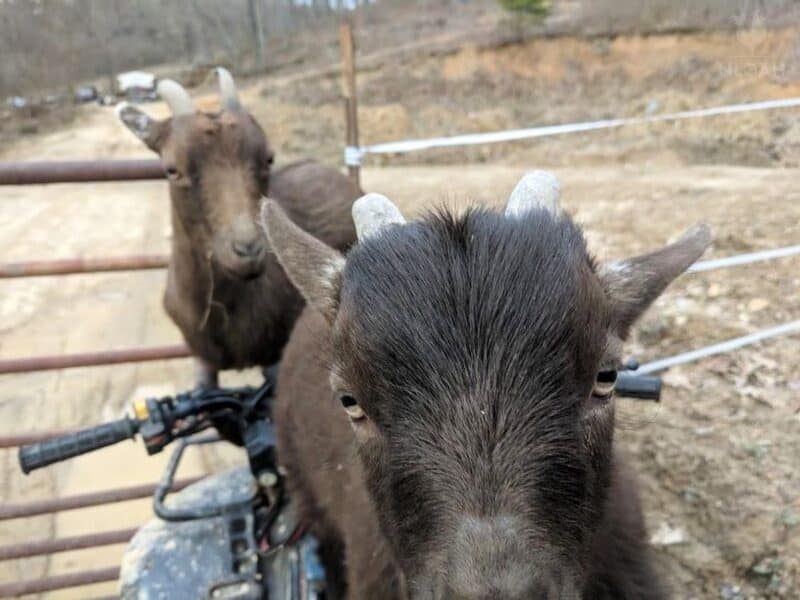
Don’t Forget About Predators
If you’re going to free range your goats, it’s not a good idea to leave them to their own devices all night. You may want to have some fenced in areas or a shelter to bring your goats to at nightfall.
Fencing doesn’t just keep your goats out of certain areas. It also protects your goats from threats, like bobcats and coyotes. Keep your goats locked up at night, even if you let them free range during the day.
Take Baby Steps
If you aren’t ready to commit to fully free ranging your goats quite yet, don’t worry. You can take a few baby steps first. for example, you may want to give staking or tethering your goats a try. That way, they’ll be able to more or less “be free” but you’ll still have some control over where they can roam.
You can tie your goat to a stake and then move it around to wherever you want it to be. You could also tie it to a cinder block. Another option is to tie a rope to a tree branch and let your goat forage in the shade (just make sure the tree branch is sturdy so he doesn’t break it!).
Know How Much Land You Need
A common question that people ask when considering the idea of free ranging their goats is how much land they need to do so.
Honestly, this really depends. You could free-range goats on a property the size of a postage stamp, but of course, the more space you have, the better.
It doesn’t just depend on how much space you have available but what quality the land is, too. If you have good-quality land, you can probably graze up to eight goats per acre. If it’s not great quality, though, you may only be able to get by with a couple.
A word to the wise – regardless of how much space you have, don’t try to free-range just one goat. A single goat is a recipe for disaster, as he will be lonely and will cry constantly.
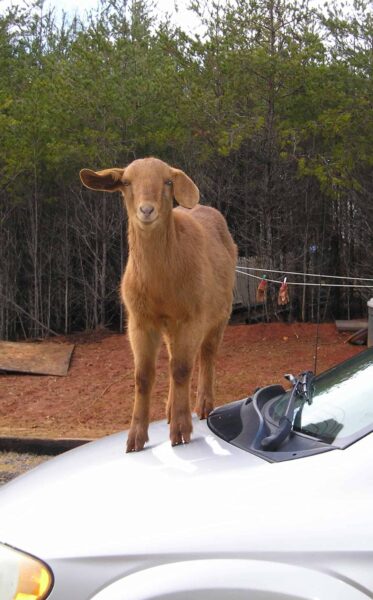
Try Temporary Fencing
If you aren’t sure that free ranging your goats is the right choice for you, consider a good halfway alternative. You can invest in some temporary fencing. Lots of people set up temporary fences to help them control other animals, including sheep and pigs, as they graze down certain areas.
When you use a temporary fence, the idea is that you can put your goat in a certain area, letting him work down the pasture and brush in that spot, before moving him to another area.
Have a Plan For Getting Them Inside At Night
I was really surprised at how easy they were to round up, and when I wanted them to get back in their pen I just shook a cup of grain for them to hear, and they came running back in. No problem!
No matter what, though, make sure you have some kind of plan to encourage your goats to come inside. It’s a good idea to make sure your goats are familiar with you and the sound of your voice before you let them free-range. Otherwise, they might not respect you enough to come back when you call – even if you rattle that grain bucket!
I’m excited about being able to let my goats free range during the day. I don’t think I’ll let them go unsupervised for a long time still. I’ll have to see if I get comfortable with that. But once I get my garden planted and my fruit trees start to bloom, I’ll definitely have to fence them in.
They were too busy mowing my yard to look up and smile for the camera. Oh well. They sure were happy to be out!
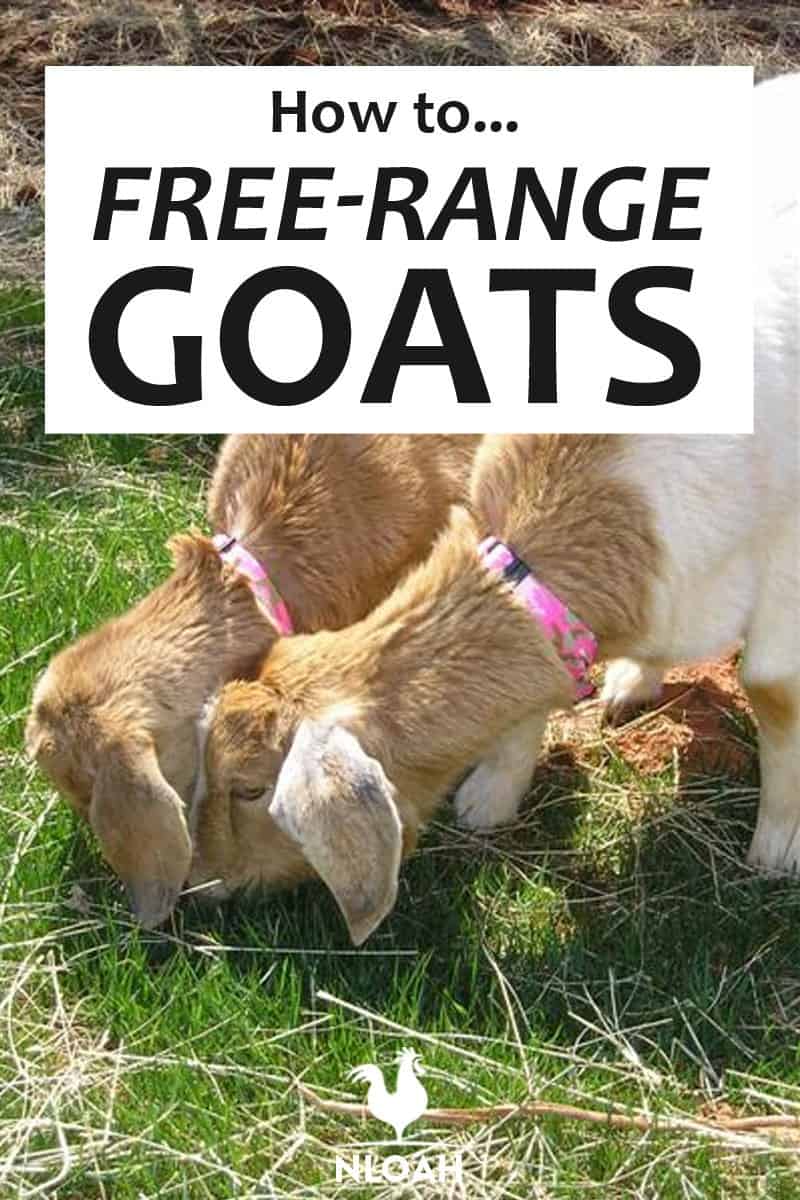
updated 06/05/2020 by Rebekah Pierce

A city girl learning to homestead on an acre of land in the country. Wife and homeschooling mother of four. Enjoying life, and everything that has to do with self sufficient living.

I have 35 acres and no close neighbors. Just got a livestock guardian dog for my goats. I highly recommend an LGD if you are going to free range. Yes, I free range once things start to green up. But I’ll tell ya, my LGD has earned her keep already and she is only 3 months old and has been here for just over a week. She found our newest baby when the first time mom couldn’t find her and was all in a panic. She also alerted to some dogs running along my fence that had no business there. She is worth her weight, and then some! How do I get my goats in at night? I have them addicted to animal cookies! All I have to do is yell “cookies” and they come running!
Oh brings back memories…
I had baby goats as a little girl and would let them out everyday when I came home from school. They would follow me around and it was such fun. Until they learned to dig out under the barn door and cry at the sliding glass door and lick it after it had just been cleaned.
My mother didn’t appreciate goat slobber on her newly cleaned door but oh well I thought it was rather cute. Goats are great fun. Your little ones are loving life and learning so much just being in your backyard!
They are growing into some very pretty little does! And their new collars are too cute!
I always liked the look of our goats with collars – even when they know you well, they sometimes get stubborn and just HAVE TO EAT that bush! They love berries. LOL And it does give you a nice handhold that isn’t painful to them.
Baby goats grow fast at this age, so make sure you check the tightness of the collars every day, just make sure you can put 4 fingers between them and the collar. They reach close to full size by 8 months, but won’t reach full size until close to 2 years old.
My daughter use to sit outside singing and telling stories to our herd – we’re down to 3 until we can get the fences fixed and moved – out last Billy was awful – and we had to get rid of him, so no babies in almost 3 years … sniff sniff. Two of ours outside were bottle fed and lived in our house for 4 weeks or so. What fun that was! Anyway, she loves to “take them for a wall” and takes her schoolwork or a book out and sits with them for hours. Ours like to go next door and nibble the neighbors nice lawn and the ornamental bushes and roses.
It looks like they were having fun! They sure are pretty!